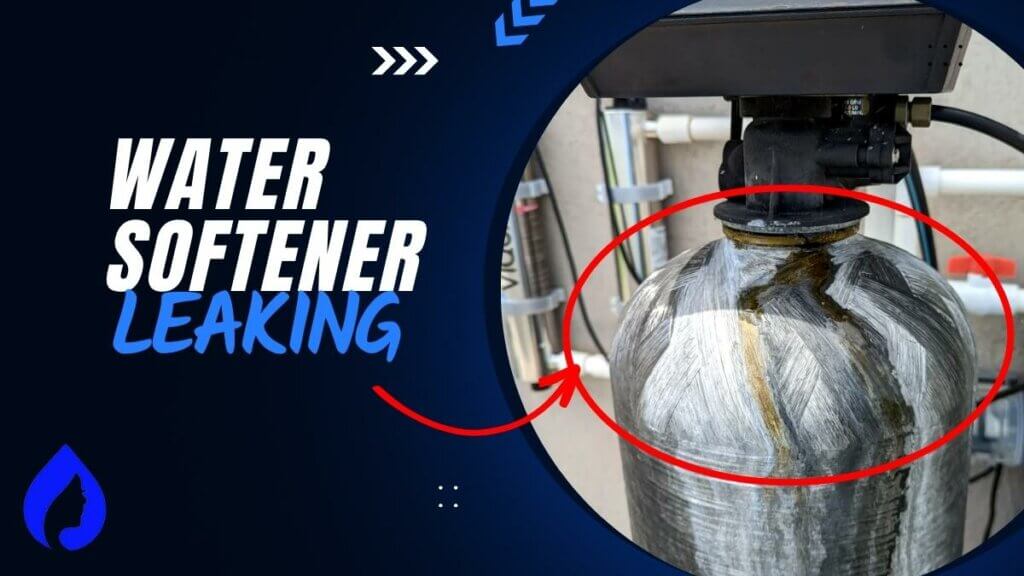
The main reasons behind water softener leaks are:
To resolve the leakage issue, immediately unplug the water softener from the electricity and bypass the water supply to ensure the water flows through the pipes until you find a permanent fix.
Continue reading the 7 reasons for a leaky water softener with easy troubleshooting steps.
🔌What to Do If Your Water Softener Is Leaking?
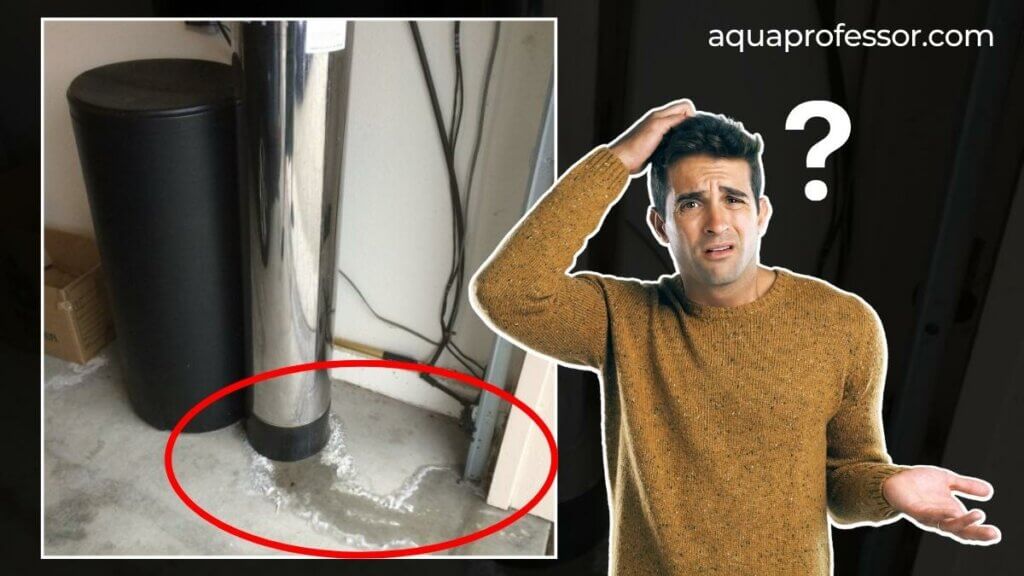
If you see your water softener is leaking, immediately:
It ensures you are safe and prevents further damage to the softener.
Now, check where the softener is leaking to fix it accordingly:
🤔 Why Is My Water Softener Leaking at the Bottom?
Here are the two main reasons behind a leaky water softener at the bottom:
| Reason | Why Does It Occur? | How to Fix It? |
| Cracked Brine Tank | You shoved at the salt bridge too harshly | Replace brine tank |
| Punctured Resin Tank | Normal as your water softener ages | Empty, clean, and repair punctured resin tank |
⚡Reason #1: Cracked Brine Tank
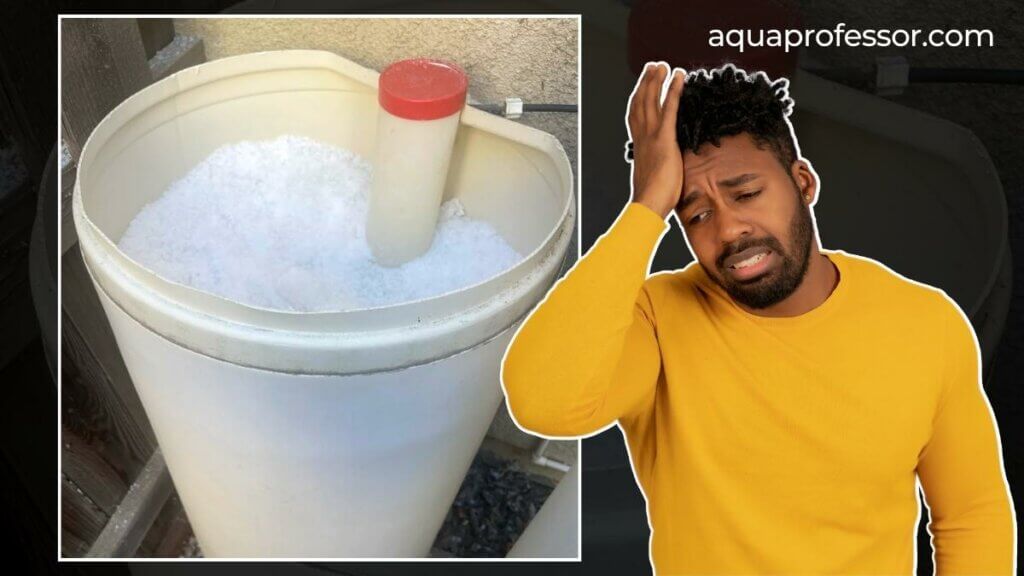
Why It Occurs
You might have applied too much pressure to dislodge the salt bridge at the bottom of the tank. This results in a weakened brine tank or complete breakage.
If you have a brand-new water softener and haven’t done any scheduled maintenance work yet, you may have received a faulty tank from the manufacturer.
How To Fix
Unfortunately, repairing a salt tank with epoxy can make matters worse. The only reliable way to fix this leaking issue is to replace the tank.
Check the manual to choose the best brine tank that matches your water softener.
🕳️Reason #2: Punctured Resin Tank
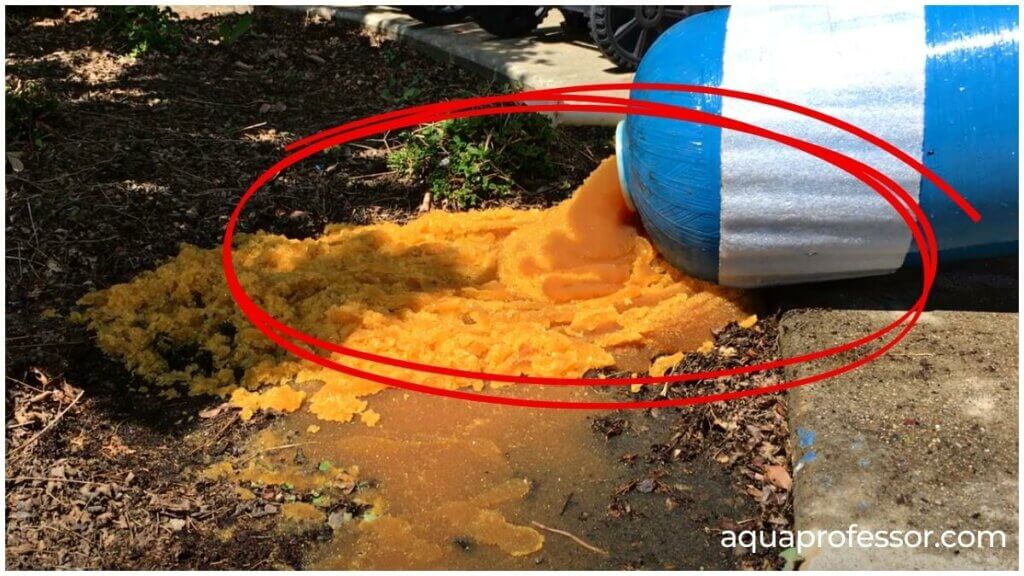
Why It Occurs
Resin tank leaks can be the result of wear and tear of an old, degraded tank.
How To Fix
To fix this issue with your resin tank:
If your water softener unit is older than 10 years, buy a new one.
Also Read: Is Water Softener Resin Dangerous?
🤷♀️ Why Is My Water Softener Leaking From the Top?
If your water softener is leaking from the control head, check out these three primary issues:
| Reason | Why Does It Occur? | How to Fix It? |
| Defective Bypass Valve O-rings | Lack of regular lubrication or damage due to aging | Replace the defective O-rings with new ones (check the proper size) |
| Leaking Rotor Valve | Defective rotor valve due to aging Deposits of mineral build-up Faulty seals Broken valve | Replace the rotor valve or the damaged parts |
| Overflowing Brine Tank | Faulty float valve Clogged brine line Clogged brine injector | Detach the float valve, and carefully remove the salt clumps Inspect and remove any mineral build-up in the brine line Clean the brine injector with a toothpick |
⭕Reason #1: Defective Bypass Valve O-rings
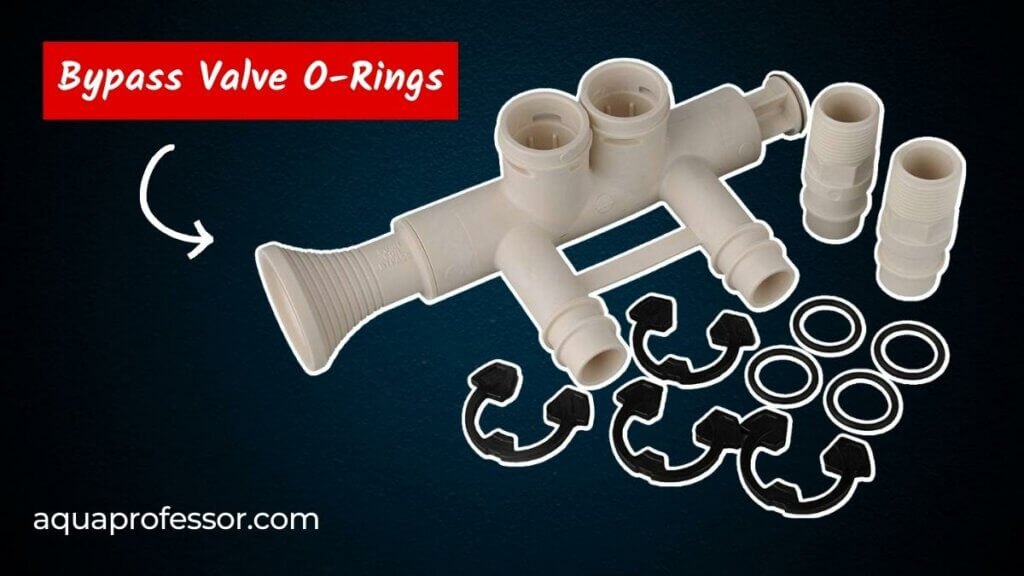
Why It Occurs
Bypass valve o-rings can degrade. And if you are not maintaining them properly with lubrications, it’s more likely to damage before time.
How To Fix
Read the manual to understand the right size of O-rings and replace the old ones with the new ones to fix the leakage.
To Depressurize the Unit
Also Read: How To Fix No Water In A Water Softener Tank?
💦Reason #2: Leaking Rotor Valve

Why It Occurs
The rotor valve on top of the water softener gets exposed to the hard mineral water, and hence, it’s likely to get damaged by the buildup.
Besides, if you can’t see the damage but the leakage is there, the seal inside the valve is broken.
Besides, if you can’t see the damage but the leakage is there, the seal inside the valve is broken. Also, the valve can be damaged over time due to a lack of routine maintenance or aging.
How To Fix
Replace the rotor valve to fix such leakage issues.
🧂Reason #3: Overflowing Brine Tank

Why It Occurs
An overflowing brine tank isn’t the same as leakage. But if you see a water softener overflow, it can caused by:
How To Fix
For clogged brine lines, you need to detach them, check for any clogs or twists, and straighten the brine line to clean the collected salt. Use a toothpick to clean the brine injector, but be gentle to avoid damaging it with the sharpness.
Consider consulting a plumbing professional if you can’t fix the issues yourself.
💧 Why Is My Water Softener Leaking From the Drain Line?
A water softener can leak from the drain line for two common reasons:
| Reason | Why Does It Occur? | How to Fix |
| Loose/Damaged Drain Line | Mineral deposits Faulty drain line connections | Call a plumber to tighten the connections/repair drain line |
| Loose/Faulty Brine Hose | Improper installation It can also loosen over time | Either replace the damaged brine hose or tighten the hose clamps and fittings. |
🔩Reason #1: Loose/Damaged Drain Line
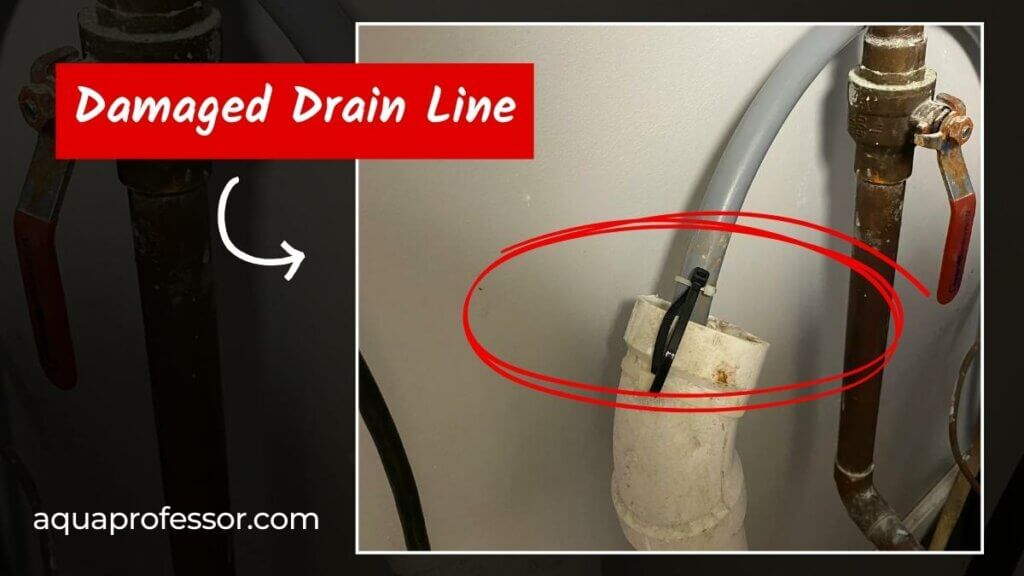
Why It Occurs
The drain line is the route for the mineral water to discharge after the water softening process.
So, it collects a high calcium and magnesium minerals concentration and is more likely to get damaged.
Furthermore, there can be drain line connection issues during plumbing, which results in a loose or damaged drain line.
How To Fix
You can simply tighten the fittings and clamps if they’re only loose. If there are holes, cracks, or damage due to minerals, you can get professional help or replace the drain line.
🔌Reason #2: Loose/Faulty Brine Hose
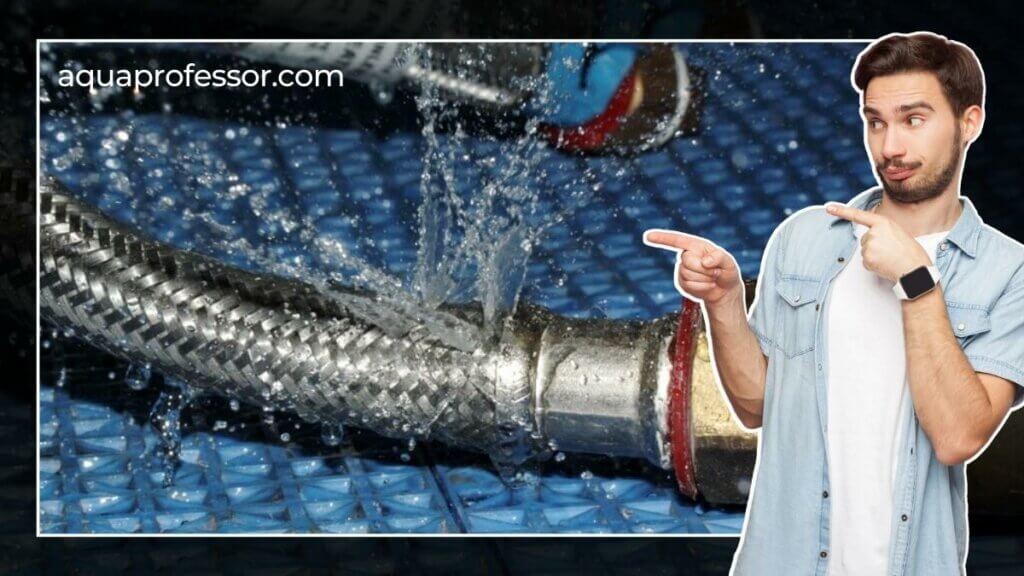
Why It Occurs
Brine hoses can loosen by mistake during plumbing or may be damaged after years of service.
How To Fix
Fix a loose brine hose by tightening the fittings and clamps. But ensure not to overtighten, as that can result in further damage. On the other hand, a damaged hose needs a replacement for proper functioning.
👨🔧 How to Stop Water Softener From Leaking After Regeneration?
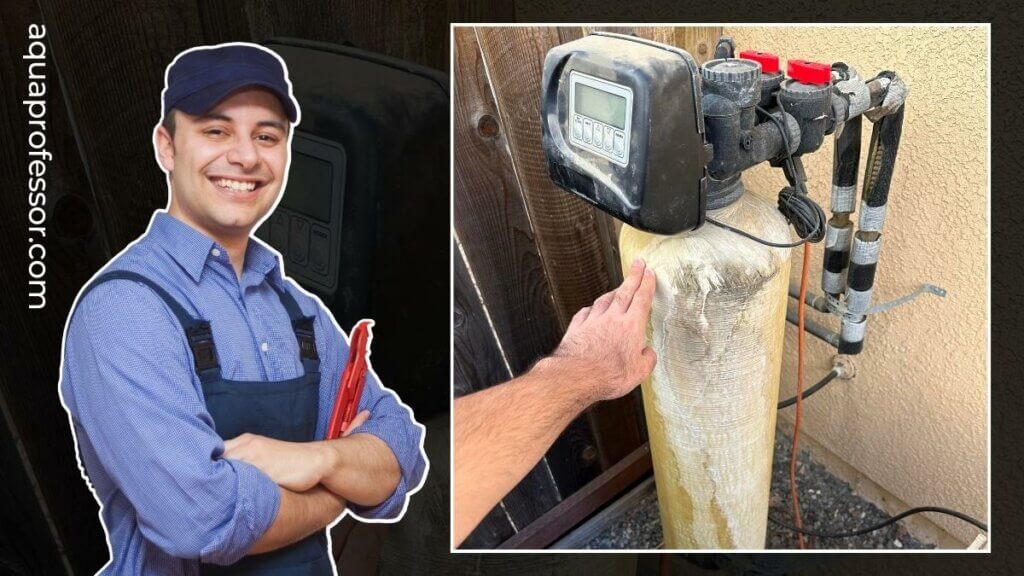
Here is the step-by-step process to stop the water softener from leaking after regeneration:
If you see a hole or crack, replace the drain elbow. Here’s how to do it:
Note:
If you have severe leakage that you can’t figure out or fix yourself, contact a plumbing expert.
💡 Water Softener Leaking: FAQs
Why is my water softener leaking from the overflow?
Your water softener may leak from the overflow due to a faulty or misaligned float valve.
To fix an issue with the brine tank float valve, realign the valve or replace it.
What causes water softener resin to leak?
The main causes of water softener resin leaks are:
1. Worn-out seals
2. Damaged upper distributor or a broken screen
The simplest solution to this issue is to detach the valve assembly and closely inspect the issues in each section. Replace the parts you found cracked or damaged, whether it’s the seals, upper distributors, or the screen.
Why is there water around my water softener?
Water around your water softener can indicate improper water drainage during the regeneration cycle. Otherwise, it can be because of leaks or cracks in your plumbing or malfunctioning bypass valves.
Here’s how to fix it:
1. Scoop out the water with a bucket or a wet-dry vacuum and discard it safely.
2. Push the REGEN button for a few seconds and perform a manual regeneration cycle.
How much does it cost to fix a leaking water softener?
The cost to fix a leaking water softener varies from $10 (for O-rings) to $2000 or more for severe problems. Replacement of some parts can cost up to $300. However, tank replacement can cost between $500 to $1000. If you want to consult a plumbing specialist for inspection, the service can cost you $50-$200 per hour.
Why is water softener leaking during regeneration?
If your water softener leaks during the regeneration mode, you have a cracked or punctured brine line. The simple solution to this issue is to replace the drain line and flow assembly.
Adarsh is a Health & Nutrition Sciences graduate with expertise in environmental health. He is associated with ventures like Glacier Fresh Filter and Simpure Filter Systems. Through Aqua Professor, he intends to provide helpful information to every home to help them make smarter decisions.
